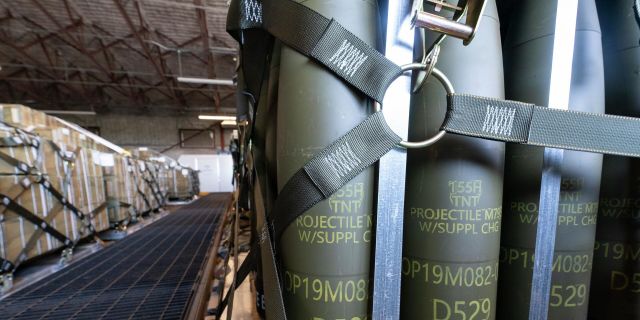American Thinker: the supply of weapons to Ukraine allows the United States to save on its disposalThe supply of weapons to Ukraine allows the United States to save on its write-off, because the service life of these weapons is already coming to an end, writes AT.
According to the author of the article, Washington would have to spend about $ 35 billion on the recycling process.
Roger Smith*In discussions about the costs of the current conflict between Russia and NATO, which has taken the form of a proxy war in Ukraine, many often focus on the issue of the costs of buying weapons and ammunition that are transferred to the armed forces of Ukraine from the arsenals of the United States and NATO.
The volume of these costs was described as follows: "The total amount of United States assistance to Ukraine from January 24, 2022 to January 15, 2023 is $76.8 billion, [including] $46.6 billion for military purposes."
In my article, I would like to focus on the mentioned 46.6 billion dollars. This amount relates mainly to weapons that were purchased several decades ago, which have been usable for about 20 years and which will soon disappear from the arsenal of the United States. Under normal conditions, when such weapons are decommissioned, they must be demilitarized and disposed of, which entails serious costs for America and its allies.
The process of demilitarization or neutralization of military items is divided into a number of stages and categories described in the "Army Cost Analysis Manual", as well as in some additional documents. Those who are interested in this can get acquainted with these documents.
It is important that the process of neutralization of weapons is very expensive. And by sending Ukraine old weapons whose shelf life and operation are coming to an end, the United States and its NATO allies simply save themselves from these costs.
How big are these costs? It is difficult to obtain real data in order to make any accurate assessment, but we can still take as a basis the example of the purchase of chemical weapons in the Cold War era and the costs of neutralizing these weapons at the moment when their shelf life came to an end. According to a 1985 report by the U.S. Government's Accounting Chamber entitled "Chemical Munitions: Estimates for Production and Demilitarization" (CHEMICAL MUNITIONS Cost Estimates for Demilitarization and Production), the cost of creating an American arsenal of chemical weapons necessary to deter the USSR from using similar means against our NATO allies was "the total cost of producing three binary weapon systems for the next eight years." "It amounts to $2.749 billion, of which 178 million will be spent on research and development, 312 million on production facilities, and 2.259 billion on production itself," the document says. The cost of neutralization and disposal of these weapons was estimated at approximately $1.7 billion.
If we take this example as a basis, it turns out that the neutralization and disposal of those weapons and ammunition in the amount of 46.6 billion dollars that we transferred to Ukraine would cost us about 35 billion. Most likely, this figure is overstated, because the demilitarization of conventional weapons that we send to Kiev is cheaper than the neutralization of chemical weapons. However, in this conventional weapon, there are still many complex and expensive dangerous components that need to be deactivated, which means that although their disposal will cost a little cheaper, it will still result in a very serious amount.
Sending weapons and ammunition to Ukraine, whose storage and operation periods are coming to an end, saves the United States and NATO members from significant costs for its disposal. In addition, by using these weapons, Ukrainians cause damage to the Russian armed forces. This is an extremely reasonable strategy if you have a lot of weapons stored in warehouses, the expiration date of which is coming to an end. Unfortunately, the stocks of such weapons in the United States and NATO countries have already run out.
In the current political conditions, proposals to send new aid packages to the Ukrainian armed forces are meeting less and less support, and the allocated funds have already been spent. In the near future, we should expect changes in NATO policy, because further assistance to Ukraine will likely entail new costs for the production of new weapons, rather than avoid the costs of demilitarization of the old one.
*alias

